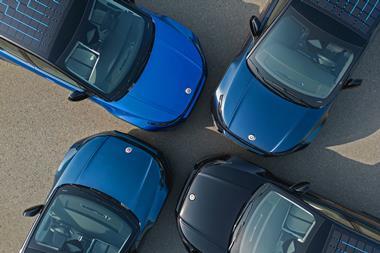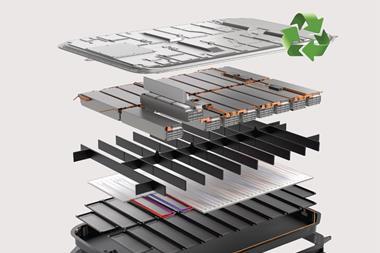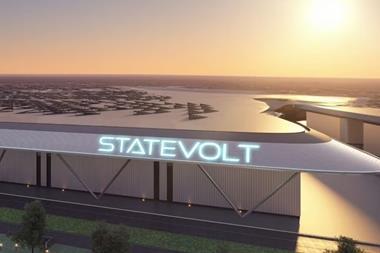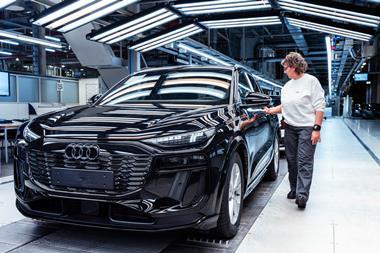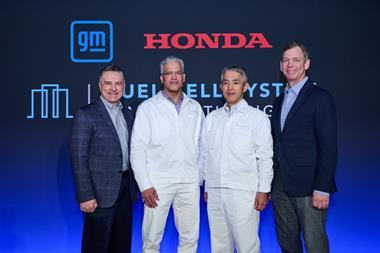As North American automotive production continues to recover from the economic crisis, Mexico is powering ahead as the engine of growth, with more OEMs investing in facilities and output increasing
The healing process that took place in the US automotive industry after the shock of the economic downturn is now so far advanced that the annual figures have returned to pre-2008/9 levels. With just over 11m cars, light trucks and commercial vehicles (CVs) built last year, and another uptick in the first six months of this year, the 2002 high of 12.3m units now looks achievable; one estimate puts the numbers close to that already.
As a participant in the North American Free Trade Agreement (NAFTA), Mexico has grown so fast in the last 14 years that the country has added another 1.2m units to its vehicle production, recording just over 3m last year according to the International Organization of Motor Vehicle Manufacturers (OICA). A huge chunk of this output is being exported north across the border.
While the number of plants in the US and Canada has remained static following the painful factory cull necessitated by the crisis and subsequent bankruptcy and rebuilding of two of the big three American manufacturers, Mexico has continued to attract a stream of OEMs keen to build new plants and take advantage of the low wages, growing productivity and welcoming terms of NAFTA. “There’s no question Mexico is in a very strong position right now,” says Mike Jackson, director of IHS Automotive’s North American vehicle production analysis.
The role of manufacturers building in Mexico was already substantial, but the past 12 months have seen the country confirmed as one of the world’s top manufacturing locations, with new factories coming on stream and all three German premium manufacturers pledging new plants.
B & C-segment additions
Joining the established players in Mexico – Nissan, VW, Toyota, Ford, Chrysler, Honda and GM – is Mazda, which has started production at its new plant in Salamanca city, Guanajuato State. The initial output is focused on the C-segment Mazda3 but there are more models to come as the plant ramps up to its full 140,000 upa capacity.

Confirming the Japanese OEMs’ confidence in Mexico, late last year Nissan starting building the Sentra C-segment in a newly opened second plant on its huge Aguascalientes site. In the first half of this year, the plant reportedly made almost 100,000 of the model. In combination with the adjacent facility, which makes mainly B-segment models, the output reached over 300,000 units; Aguascalientes is now the biggest automotive production site in North America, beating even VW’s vast Puebla factory south-west of Mexico City.
VW, meanwhile, added the latest-generation Golf hatchback to the Puebla production line-up in January this year, after previously focusing on the Beetle, the estate version of the previous Golf and the Jetta C-segment saloon. The idea here, according to Jackson, is to focus on smaller vehicles, which need a low-cost production base to make the sums work.
Pushing for premium
In recent months, though, Mexico has proven itself able to build a new class of vehicle: premium. While current production largely focuses on small, inexpensive cars and CVs, in the future it will build cars from all three German premium makers. “It’s quite a unique achievement. It really speaks for Mexico’s capability to improve,” says Jackson.
VW-owned Audi was the first to announce Mexican production, and has started working on a plant that is set to open in 2016, building 150,000 a year of the Q5 mid-size SUV. The factory at San Jose Chiapa, not far from Puebla, will eventually employ 3,800 workers.
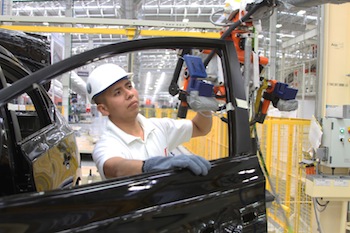
The Infiniti cars are likely to be the small SUV crossover already announced for Nissan Sunderland and will be produced from 2017 at the plant, which will have a total capacity of 300,000 a year. The $1 billion investment will be shared across both brands. The two already collaborate on engines, with Nissan’s US engine plant at Decherd, Tennessee, starting production in June of four-cylinder engines bound for the Mercedes C-class saloon and Infiniti Q50 SUV.
Then, in July, BMW announced that it would build a plant in Mexico to supplement production of its highly successful US factory in Spartanburg, South Carolina. It will be the last of the three OEMs to start production, with the first cars scheduled to appear in 2019. No models were specified, but industry commentators have suggested that the 3-Series is likely to feature. Located west of Aguascalientes, in San Luis Potosí State – where GM has a plant building the Chevrolet Aveo and Trax B-segment cars as well as transmissions – the new BMW plant will have a capacity of around 150,000 units. It represents an investment of around $1 billion.
Looking out for sales
It is not the comparatively small Mexican market which the OEMs are interested in, but the global possibilities. “Mexico is benefiting from its dense number of free trade agreements,” says Jackson. “These drive favourable access to some 45 countries around the world.” Chief among them is NAFTA. In the first six months of the year, Mexican vehicle production stood at 1,597,594 units, according to Asociacion Mexicana de la Industria Automotriz (AMIA). Of that figure, 1,273,571 units were exported – a massive 80%.
At present, Mexico’s northern neighbours, the US and Canada, are taking the bulk of the exports, with just over 1m of the total. However, other regions are becoming more important, with South America accounting for around 10%, Europe for almost 5% and Asia a similar amount. This could well change as higher-value vehicles are made in Mexico; Audi, for example, has stated that it wants to export the Q5 “worldwide”.
What has changed the dynamic [in the US] is that many manufacturers are increasingly looking at designing and developing products and producing them here to sell in a broader range of countries worldwide" – Mike Jackson, IHS
Mexico could follow a model already seen in the US, where brands are increasingly exporting high-value vehicles from a single hub. BMW does this successfully with its SUV-specialised Spartanburg plant, which is set to expand again by the end of 2016 to take capacity to 450,000 upa from 300,000, making it the largest in the company’s production network. BMW says around 70% of its output is currently exported from the US. The OEM’s latest SUV, the X7, will be solely made there to join the X3, X4, X5 and X6. BMW has quoted a US Department of Commerce report saying that its total annual export value now tops $7.5 billion, making it the largest US producer to export outside NAFTA.
Meanwhile, Ford will export its next-generation Mustang sports car from its Flat Rock plant in Michigan to global markets. Previously, the flagship model was only sporadically available outside North America. More recently, the OEM has also said it will export the new Edge large SUV from its recently overhauled plant in Oakville, Canada, to 60 countries in order to tap into the growing global taste for SUVs.
Jackson believes the US could be exporting around 2.5m cars per year outside NAFTA by 2021, more than double the 1.3m he says it currently exports. “In the downturn, a number of facilities were under-utilised and many were closed. What has changed the dynamic this time is that many manufacturers are increasingly looking at designing and developing products and producing them here to sell in a broader range of countries worldwide,” he says.
Ford is a good example. The company has said that it wants to build cars and light commercial vehicles (LCVs) on just nine platforms. Current it uses 15 – down from 27 in 2007. The huge investment needed will eventually bring the desired economies of scale, according to Darren Palmer, global vehicle line director for B-segment vehicles. Ford believes that building fewer model lines will satisfy world markets: “Market needs are converging,” noted Palmer. A recent example is the end of production of the Ford Econoline van at the Ohio plant, to be replaced by the European Ford Transit that went into production at the revamped Kansas City plant this April. Ohio, meanwhile, has been assigned the F650/F750 medium-duty pick-ups currently made in Mexico in a joint venture with truck-maker Navistar – one of the few cases in which production has been moved out of the low-cost country.
Strengthening local content
Any OEM manufacturing in Mexico has to show that North American parts content is 50% based on net cost, rising to 62.5% in five years, in order to take advantage of favourable NAFTA import agreements. This is having a huge effect on Mexico’s supplier base, and the latest round of agreements for new factories has been accompanied by pledges for local supplier parks.
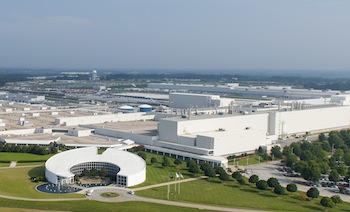
Audi is another OEM giving its suppliers a helping hand, with a park planned just south of its new plant at San Jose Chiapa which will employ about 1,000 people. The company says it already has 130 suppliers lined up for Q5 production, with 75% from North America and 20% from Europe. Audi plans to push the former to 90% in the future, and although the OEM has not said so, this means localised engine supply. The engines are likely to be shared with VW, which makes TSI turbocharged petrol engines at its plant in Silao, Guanajuato State, just north of Mazda’s new plant (which will also have an engine operation from October).
This set-up is something that BMW currently lacks in North America, while Mercedes has only just achieved it with its Nissan link-up. However, BMW is apparently contemplating such a venture, according to a Bloomberg story in December last year.
Overall, carmarkers in Mexico are well served for suppliers across the tiers, a product of the country’s comparatively mature industry. According to a KPMG report published earlier this year, Mexico has 1,200 suppliers, 500 of which are Mexican, with many more setting up business. KPMG’s data shows that Mexico is now the world’s fifth largest supplier of parts after China, Japan, the US and Germany.
Alleviating US capacity pressure
The expansion in Mexico is helping manufacturers that are pushed to capacity in the US. “Some plants are in the 90% range for utilisation. This is not sustainable longer term,” says Jackson. For example, in July, Reuters reported that Kia was in talks with the Mexican government about a possible new plant in Monterrey, Nuevo Leon State, not far from Chrysler’s CV plant in Saltillo. With a capacity of 300,000 upa, the facility would take some pressure off Kia’s US plant in West Point, Georgia, which works three shifts and is shared with Hyundai. Indeed, Kia announced record US sales in July.
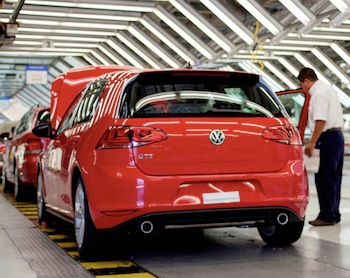
American commentators put forward the theory that VW was rewarding an earlier vote by staff to reject UAW union representation, although the union has since set up minority representation at the plant. The investment is significant because the car will be based on VW’s MQB modular toolkit, which is also expected to bring future versions of the currently US-specific Passat onto the platform too.
High-tech expansion is another growth area in the US. BMW is investing $200m in its joint venture with SGL Group which makes carbon fibre at Moses Lake, Washington. Meanwhile, California-based electric carmaker Tesla signed an agreement in July with Panasonic for its ‘Gigafactory” battery plant that the company reckons will employ 6,500 personnel by 2020. No location has been confirmed, but reports suggest that Nevada is the top choice.
Uniting production, purchasing & engineering
Perhaps the decision that created the biggest headlines in the last 12 months was Toyota’s announcement in April that it would move its North American HQ out of California and onto a shared campus in Plano, Texas, by 2017. The company’s manufacturing, sales and marketing, corporate operations and finance arm will all relocate there, affecting around 4,000 employees.
According to Jackson, the decision is partially due to Toyota’s aim to align itself with the State, the largest pick-up market in the US, and the location of Tacoma and Tundra pick-up production, which are made in San Antonio. “Anything that endears them to the Texans is good; Toyota are not as strong as they would like in the full-size truck categories,” he says. Incentives from the State will have played their part, combined with a desire to leave costly California, but he believes that corporate convergence was key: “Certainly in the future you’re going to see much tighter co-ordination within organisations – purchasing right through to production”.
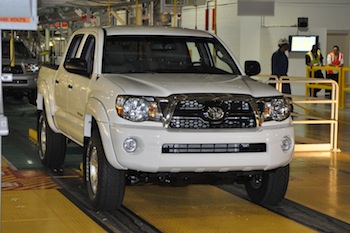
The same desire to bring purchasing together with manufacturing and engineering is being played out in the Big Three of Ford, Chrysler and GM, according to Jackson.
“Purchasing executives in the past were known for their ability for purchasing, now they’re blending technical and engineering combined with purchasing,” he states, adding that the current head of purchasing for Ford, Hau Thai-Tang, came from the engineering side when he was appointed last year.
With Canadian production relatively static (1,265,994 units in the first six months of this year, almost 400,000 below Mexico’s figure) and no new plants destined for the US, Mexico is the biggest engine of North American growth in the near term. Analysts put production over 4m by 2020, where it would be vying in the capacity league table with huge population centres like Brazil and India, and even the Asian powerhouse of Korea. Not bad for a country that last year barely cleared 1m sales within its own borders.
























